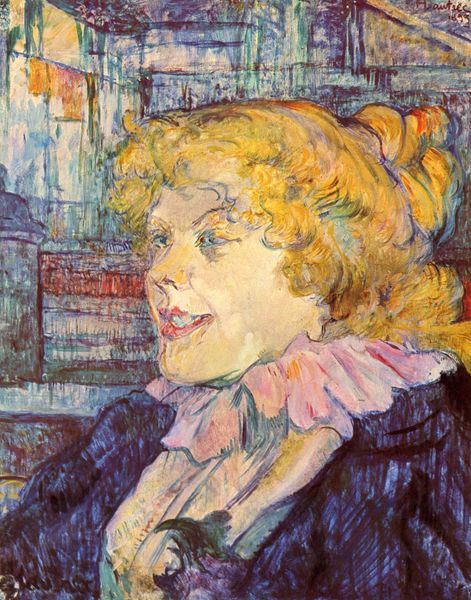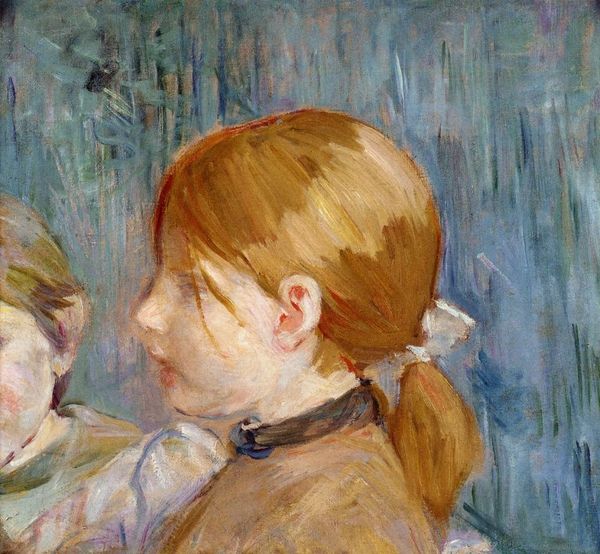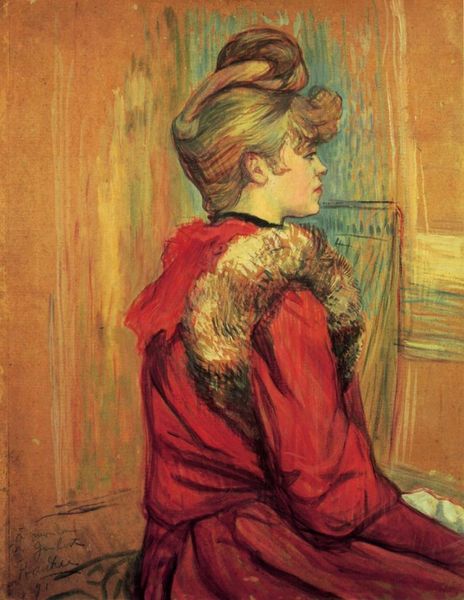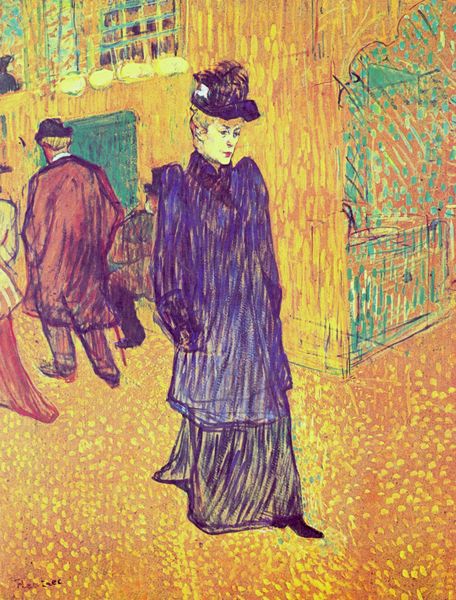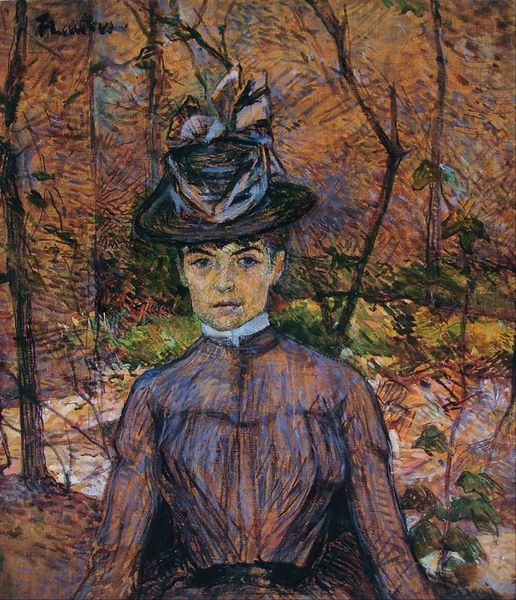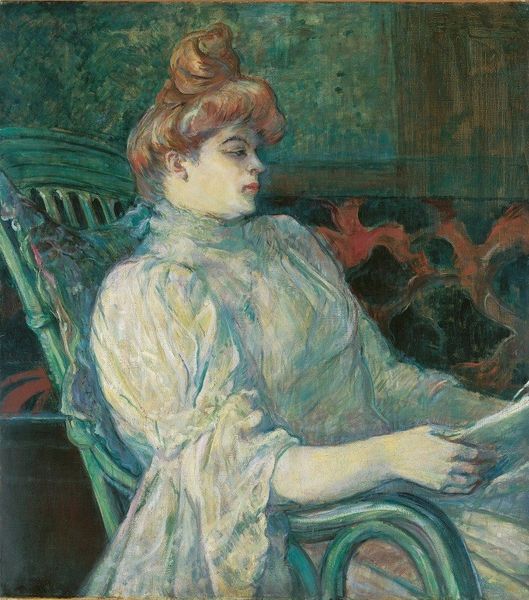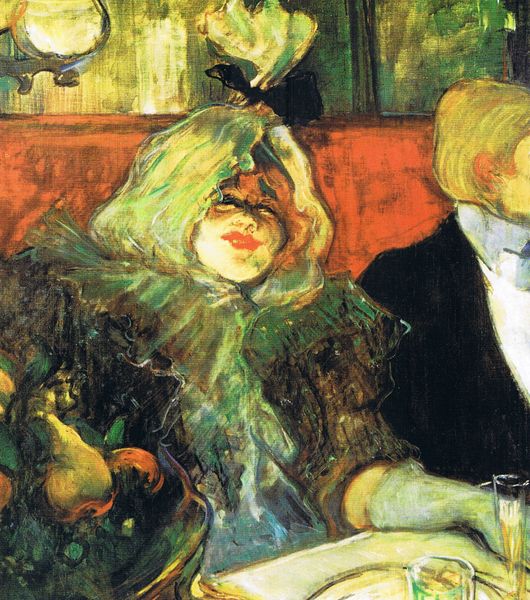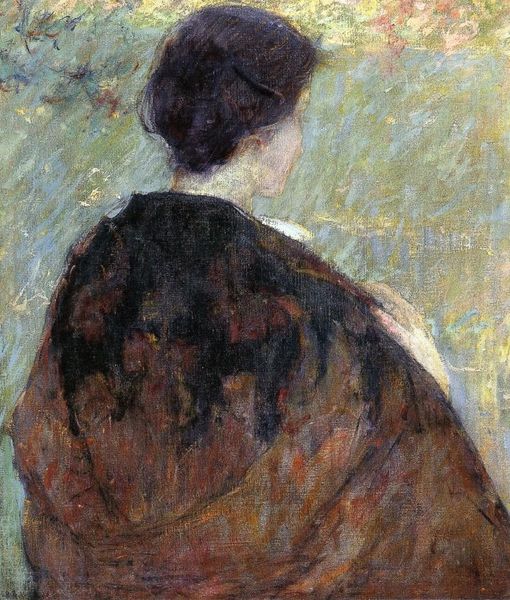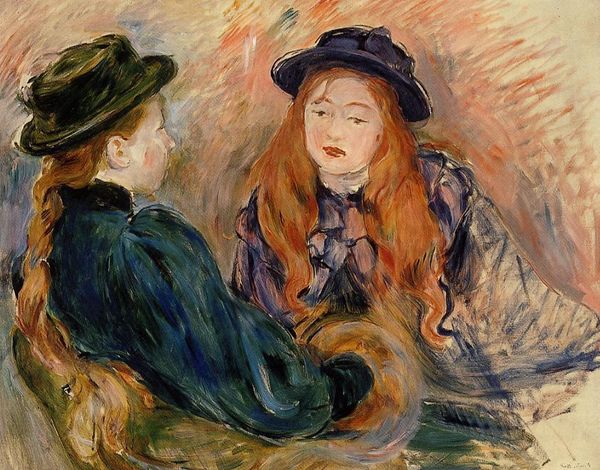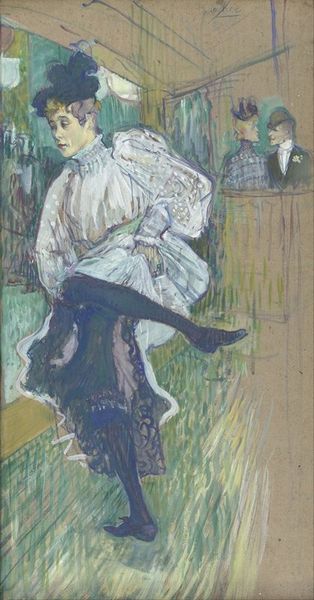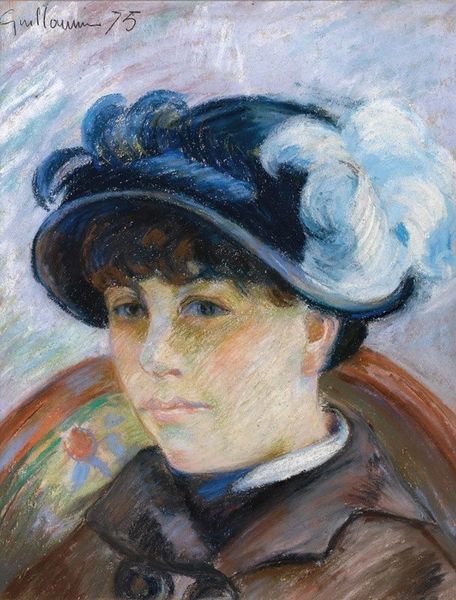
Copyright: Public domain
Editor: Here we have Toulouse-Lautrec’s “The Milliner,” painted around 1900. The subject, a woman surrounded by hats, has this beautiful, melancholic air about her. What is your take on this painting? Curator: Well, situating this within its historical context is key. Lautrec often depicted figures from the margins of Parisian society. Considering that, do you see the depiction of the milliner here as merely observational, or perhaps as commentary on the role of women and labor in the city at the time? Editor: That’s interesting. I hadn’t thought of it that way. It feels more observational at first glance, almost like a candid snapshot. But knowing his other work, there's probably more to it. Is he challenging societal expectations in some way? Curator: Precisely. The ‘snapshot’ aesthetic, with its looser brushstrokes characteristic of Post-Impressionism, brings a sense of modernity. Yet, the milliner, surrounded by her wares, also evokes the pressures and confines placed upon women within a rapidly industrializing urban landscape. Think about the patrons of the millinery; the elites, performers. This worker embodies a key position in society. Does she partake? Or only labor? Editor: So it’s about the contrast between the artistry of the hats, representing a certain social sphere, and the potentially limited agency of the woman creating them. It adds a layer of complexity that I didn't appreciate initially. Curator: It also reminds us that art isn't created in a vacuum; it is a product of its time, influenced by social conditions, the art market, and the artist’s perspective. Lautrec certainly gave a unique POV on Parisian culture, for all levels of society. Editor: This painting definitely gives me more to think about in terms of the artist's motivations. I guess art reflects not only what the artist sees, but what the viewer also sees! Curator: Exactly, and each viewer’s context colors that reflection a little differently. It's about peeling back those layers to understand the dialogue between the artist, their subject, and the society they both inhabited.
Comments
No comments
Be the first to comment and join the conversation on the ultimate creative platform.
